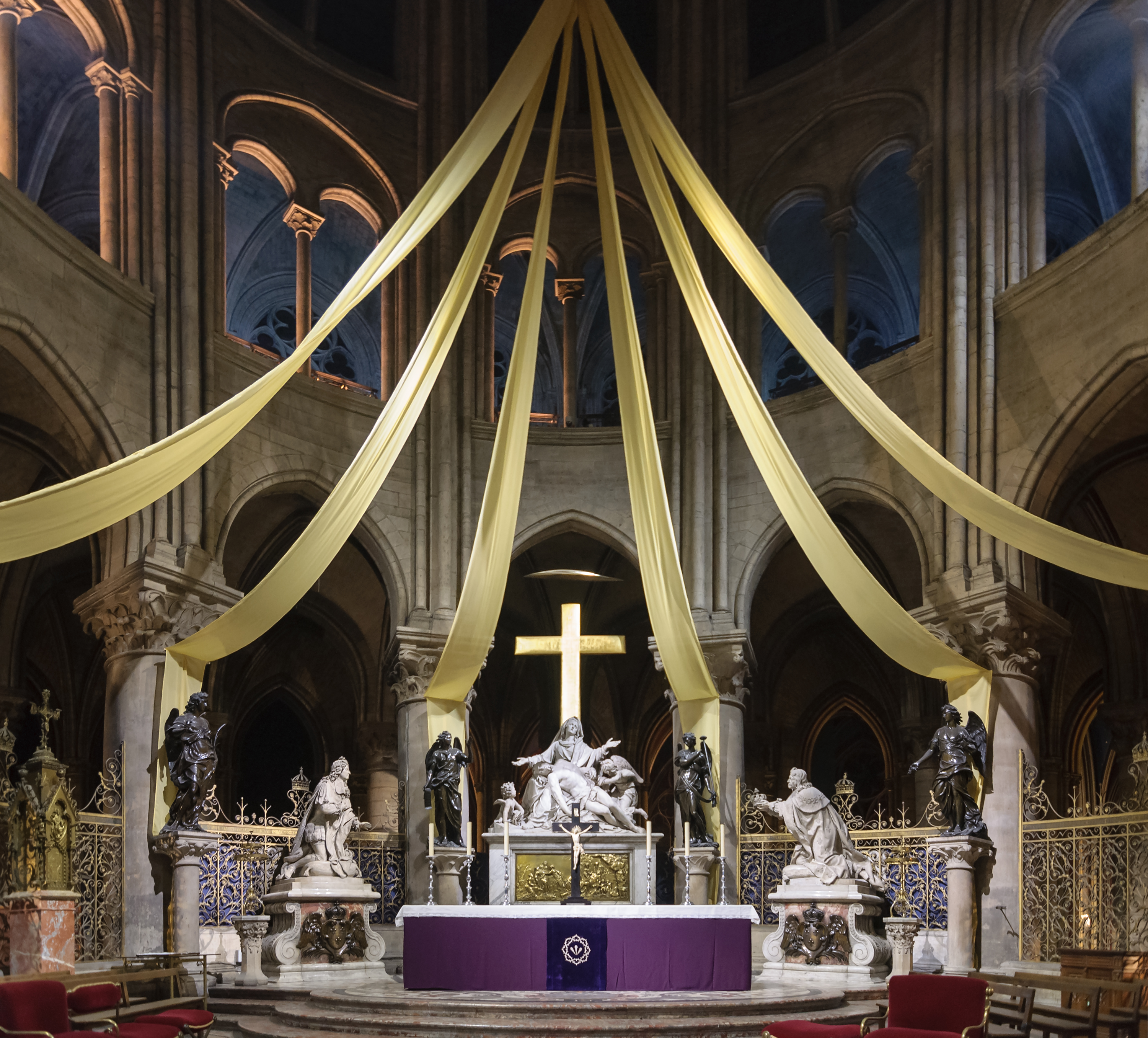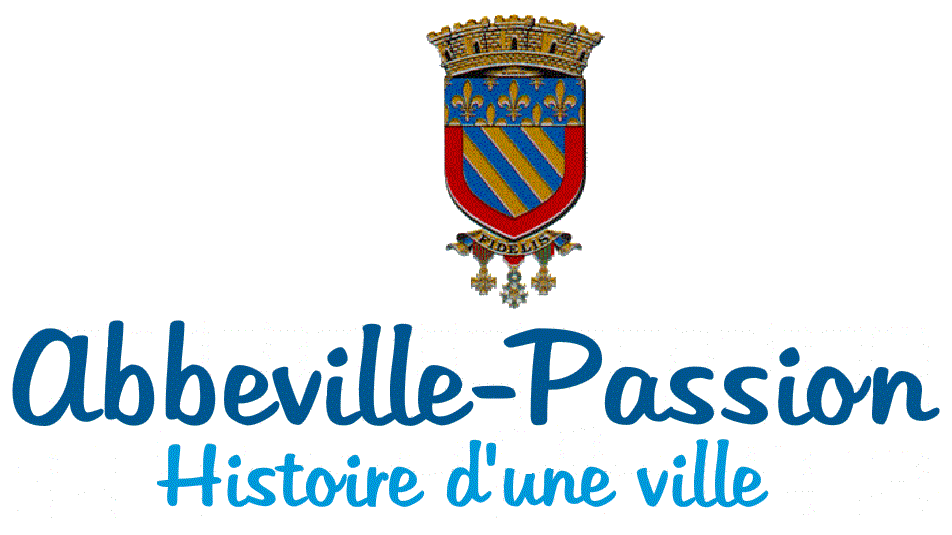-

 Monuments
Monuments- • L'hôtel de l'Alhambra
- • Monument La Barre
- • The "Baths and Shower"
- • The Bourdois or Small Echevinage
- • The Carmel
- • The Charterhouse of Thuyson
- • The Municipal Theatre
- • The bridge of the Six Moulins
- • The château de Bagatelle
- • The manufactures des Rames
- • The naked woman
- • The so-called new house "Van Robais"
- • The train station
- • The Battle Abbeville
- • The liberation of Abbeville
-

 Personalities inhabitant of Abbeville
Personalities inhabitant of Abbeville- • Albert Laurent, Musician and literary
- • André Maurois
- • Ernest Prarond
- • Father Pierre Carpentier
- • François-Jean Lefebvre, Chevalier de La Barre
- • Henri Caron, painter of the Bay of Somme
- • Jacques Boucher de Crèvecoeur de Perthes
- • Jean-François Lesueur
- • Max Lejeune and the reconstruction of Abbeville
- • Pierre François Guerlain
- • Roger Agache
- • Rose Bertin
- • The Admiral Courbet
- • Van Robais
-

 Sports
Sports- • SCA
1453028 visitors
33 visitors online
It is commonly called Vow Louis XIII all promises and acts of devotion performed by the same King between 1632 and 1638 in adoration of the Blessed Virgin.
He decides to devote his kingdom and his person to the Virgin Mary in gratitude for his paternity on the one hand (giving him an heir to succeed him after 22 years of waiting) but also and especially in gratitude for the protection of his kingdom unconquered in the face of Spanish repression and rising Protestantism.
He therefore plans the construction of a gigantic monument in homage to the Virgin in the choir of Notre-Dame but, dying before its completion, it is his son Louis XIV who will pay this debt: it is the Master Altar of Notre-Dame de Paris. The latter represents a Pieda (that is to say, the Virgin holding her dead son crucified on her knees) surrounded by the two kneeling statues of Louis XIII on the right, holding out his crown and Louis XIV on the left, his son and heir so desired.

Let us return to the conditions and circumstances of this Vow.
To fully understand the genesis, we must return to the situation of the kingdom at this time.
I The situation of the Kingdom in 1636
Louis XIII and his minister Richelieu, by the "Peace of Ales" of 1629 decide to give Protestants some religious, civil and judicial advantages, after defeating them at the headquarters of La Rochelle. Moreover, Richelieu wants to subject the great lords to the will of the King but they, refusing this kind of "fist", begin to invent conspiracy conspiracies, going as far as agreements with foreigners. Even in his own family where his wife, Anne of Austria, remained the most Infanta of Spain (she was born in Valladolid under the title Infante of Spain and Portugal in 1601, Archduchess of Austria, princess of Burgundy and princess of the Netherlands) that Queen of France, title acquired by her marriage in 1615, makes pass in Spain the secrets of State which she manages to intercept.
In 1635, France went to war against the House of Austria (Thirty Years' War), Protestant and the Habsburgs whose leader is the King of Spain himself, Philip III. Richelieu therefore declares at the same time the war on Spain.
It is in this context of war, betrayal and anxiety that the King, ultra Catholic, relies on the Virgin Mary, to whom he devotes a special devotion. Richelieu is the direct witness.
In July, the Spanish invade Thiérache and Vermandois, the line of the Somme is crossed. In a great surge of solidarity, the French people rebelled and repulsed the enemy in Corbie and Chantilly. Faced with these two victories, Louis XIII goes to the church to thank God and the Virgin did not abandon him. He attributes them to them. It is then suggested to her by a nun of the Calvary of Morlaix to solemnly put her State and her person under the protection of the Virgin. A text referring to it is elaborated as early as 1637.
II A coveted and difficult paternity.
This part appears only in second line because many historians have maintained that this royal act was inspired to Louis XIII by his ardent desire to have a male heir. This thesis is difficult to sustain. Indeed, very few allusions are made as to the birth of a dolphin in the different royal texts. Even in his words spoken at Abbeville on August 15, 1638, shortly before the Queen's delivery.
In addition, it is proved that the royal couple were apart flat. He at Saint-Germain en Laye at the castle and her, at the Louvre in Paris, which makes a paternity physiologically impossible.
Here is the legend:
Anne of Austria, whose titles were previously mentioned, married in 1615 Louis XIII, only 14 years old. Until 1625, the Kingdom is not moved by this absence of heir. It is only from this date that one begins to worry about any sterility, the Queen apparently praying a lot for. In 1630, there was a fourth pregnancy that was not completed.
On October 27, 1637, Father Fiacre, an Augustinian father from Paris, was praying to Our Lady of the Graces when the Virgin appeared to him, a baby in the arms that she presented to him as the Dauphin. But for this reason, the Queen had to ask publicly for three novenas of prayers to the Blessed Virgin in her name, and a son would be given to her: the first novena was to be told to Our Lady of Grace in Provence, the second to Our Lady of Paris and the third at Notre-Dame des Victoires, the church of her own convent where the King came regularly to pray.
"Do not be afraid, I am the Mother of God, and the child you see is the Dauphin God wants to give to France"
Immediately, a report signed by the whole community of Augustins was drawn up and this came back to the Queen's ears. These three novenas became state affairs, were said to different places requested not without some reluctance.
On December 5, 1637, just at the end of the novenas that Father Fiacre had pronounced, the King visited the convent of the Visitandines in Paris. The story then tells that when he came out, a violent storm broke out and the King then renounced to go back to his castle in Saint-Germain. He spends the night at the Louvre in the Queen's apartments ........
Louis Dieudonne (given by God) was born nine months later, on September 5, 1638. He will be the future Louis XIV. In the meantime, the Queen's pregnancy has been experienced as a miracle.
III The link with Abbeville
.jpg)
Let's go back to the war against the Spaniards. Hostilities resume after the recovery of Corbie and Chantilly. The Spaniards advance on Hesdin and threaten Abbeville still on the border between Flanders and Artois. Some rancorous and ill-intentioned lords warned Richelieu that in Abbeville, a church called Notre-Dame de la Chapelle was dangerous and served as a fortress overlooking the city. The King and his minister decide to see for themselves and go there. They arrive in the capital of Ponthieu early August 1638. The feasts of the Assumption prepare. Realizing that Notre-Dame de la Chapelle could indeed become an enemy fortress, Richelieu made the decision to have her defeated (see article Heritage> Churches> Notre-Dame de la Chapelle). Thanks to the impotence of Guillaume Sanson then master of the city and all his advice, the church will be saved by the fact that it is dedicated to the Virgin since its construction.
At the time of the Assumption proper, Louis XIII and Richelieu are still on Abbeville and attend the solemn mass in the church of the convent of the Minimes. At the moment of the elevation, Louis XIII, his right hand at the height of the Host, solemnly consecrates his Kingdom to the Virgin.
This ceremony of Abbeville is the religious part of the consecration, the act of February 10, 1638 is the civil part.
At the end of the Mass, Louis XIII presides in person the very first procession in honor of this consecration. The monarch and his court, the Cardinal and his prelates followed the statue of the Blessed Virgin. The King's musicians, the people and the soldiers accompany the procession.
To perpetuate this memory, the King ordered that a procession similar to that of Abbeville take place in all the cities of the Kingdom.
The memory of this event has been faithfully preserved by the Abbevillois. However, it was not until 1922 that a statue was erected in front of the chapel of the Minimes, at the approximate location of the convent church, and make this memory permanent: it is "The woman with the child" of the master sculptor ROZE.
Later, in 1940, intact in the middle of the ruins, as by the miracle she celebrates, she symbolizes the resurrection of a martyred city and quickly became "Notre-Dame de France".
At this location, she will be standing in front of a care facility run by the Augustinian nuns, maternity and retirement home EHPAD (Hospital Establishment for Elderly Dependents). Even today, this establishment takes the name of Notre-Dame de France.
 - Copie.jpg)
The photo album for commemorative festivals in Abbeville is under development. You will find them classified in three sub-categories: those of August 20, 1922, those of August 21, 1938 and those of August 22, 1954.
Category : - Events
Page read 13433 times
Copyright
Images and texts are not royalty-free.
If you want to use one of the photos or texts on the site, do not hesitate to contact us and explain how you intend to use them.







